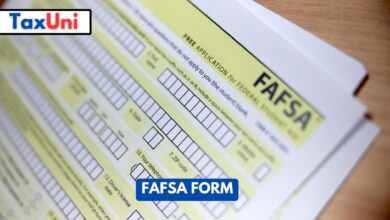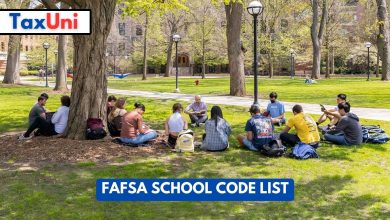FAFSA Application
The Free Application for Federal Student Aid (FAFSA) is a critical step for students in the United States seeking financial assistance for higher education. The FAFSA allows students to apply for federal grants, loans, and work-study programs, as well as some state and institutional aid.

Contents
First, you should know that FAFSA stands for Free Application for Federal Student Aid. It is a form used by many colleges and universities to determine your eligibility for federal and state financial aid. It is not the same as CSS Profile, which is a fee-based product from the College Board, a private non-profit organization that distributes institutional funds.
When filling out the form, you should make sure that your income is below the limit set by the government. Although this may discourage some students from filling out the form, there is no reason why you shouldn’t try. There are helpful hints included on the form, and you may qualify for a significant amount of money. You can also complete the FAFSA preview worksheet to get a general idea of the types of questions you’ll see on the official form.

Who should fill out the FAFSA?
If you are a student in 2024, you are probably wondering: who should fill out the FAFSA application? The application consists of several important questions, and you need to answer all of them correctly to be eligible for financial aid.
The first set of questions is about identity. This question determines your educational level and citizenship. It is designed to package awards from the various federal and state agencies into one simple form.
The next step is to obtain the Federal School Code of each college you are applying to, which can be found on your FAFSA. You should also list the schools you are applying to because these institutions use these codes to determine financial aid. If you don’t have the code, you can look up a school by name, location, or federal school code. It will take just a few minutes to fill out the FAFSA, and you won’t harm your credit score.

When can you file the 2024–2025 FAFSA?
In order to file the 2023–2024 FAFSA, you must fill out the 2025 tax forms. This information will be used to calculate financial aid eligibility. The financial data for the prior year is the basis of the second section of the form. Make sure you do not mix up the figures for the “first parent” and the “other parent.”
The FAFSA deadline for the 2024–2025 school year is June 30. However, state deadlines may differ. For example, in Alaska, students must file the application after October 1 unless they are enrolled in fall classes.
However, California students can file the 2024–2025 FAFSA until March 1, while Arkansas students must submit it by July 1, 2024. To avoid late fees and losing federal student loan money, make sure to file the form early!
Filling Out the FAFSA
Step 1: Gather Necessary Information
Before starting the FAFSA, gather important documents such as Social Security numbers, driver’s license, tax returns, W-2 forms, and records of untaxed income.
Step 2: Create an FSA ID
An FSA ID is a username and password that serves as your electronic signature for the FAFSA. Both the student and a parent (if applicable) need their own FSA IDs.
Step 3: Start the FAFSA
Go to the official FAFSA website and select the appropriate year’s application (2025–2024 for this year). Fill in your personal information, including your name, date of birth, and Social Security number.
Step 4: Dependency Status
Answer questions to determine your dependency status. Dependent students will need to provide their parents’ financial information.
Step 5: Financial Information
Enter information from your tax returns. The IRS Data Retrieval Tool can simplify this process by automatically importing tax information.
Step 6: School Selection
List the schools you’re interested in attending. They will receive your FAFSA information and use it to calculate your financial aid package.
Step 7: Sign and Submit
Review your information, sign with your FSA ID, and submit the FAFSA.





